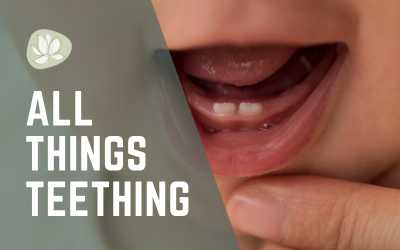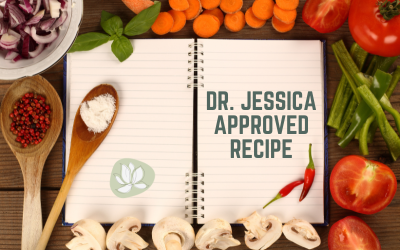Welcome to the world of homeopathy! If you’re new to this well-established healing practice, you may wonder what it is and how to get started. In this blog post, we’ll cover the basics of homeopathy and answer some of the most common questions we receive about using homeopathic remedies.
I discovered homeopathy almost 30 years ago while seeking assistance with my firstborn’s minor childhood illnesses. I loved how easy they were to administer, how fast my child responded, and how comfortable I was giving her something that supported her immune system over medications that forced a reaction and had consequences for their use.
What is Homeopathy, and how does it work?
Homeopathy is a holistic medicine system developed in the late 18th century by German Medical Doctor Samuel Hahnemann. Based on the belief that illnesses are caused by disturbances in a person’s “vital force” or life energy, which can be rebalanced by administering highly diluted remedies that follow two fundamental principles: “like cures like” and the “law of minimum dose.”
The principle of “like cures like” suggests that a substance that can cause symptoms in a healthy person can treat similar symptoms in a sick person. This concept is derived from Hahnemann’s observation that certain substances produce specific symptoms when administered to healthy individuals. By administering highly diluted forms of these substances to individuals exhibiting similar symptoms, homeopathy aims to stimulate the body’s inherent healing abilities.
The “law of minimum dose” refers to the idea that the more a substance is diluted and succussed (shaken), the more potent it is therapeutically. Homeopathic remedies are prepared through a process of dilution and succussion, where a small amount of the original substance is repeatedly diluted in water or alcohol. The belief is that this process transfers the substance’s energetic “memory” or essence to the diluent.
Homeopathy considers not only the physical symptoms but also the emotional, mental, and spiritual aspects of an individual when selecting a remedy. Homeopathic remedies work energetically and are believed to stimulate the body’s self-healing mechanisms. The aim is to support the body in rebalancing and healing itself, based on the principle of “individualization,” meaning that the homeopathy’s dosage and potency treatment is tailored to the specific symptoms and characteristics of the person rather than solely focusing on the disease or condition.
Homeopathy derives remedies from various sources, including plants, minerals, animals, and even some disease products. These substances undergo a rigorous preparation process, including dilution and succussion, to create potent remedies.
Homeopathy addresses many acute and chronic health conditions, including allergies, respiratory illnesses, digestive disorders, skin conditions, musculoskeletal problems, and emotional imbalances. It stimulates the body’s vital force or life energy, restoring balance and promoting self-healing.
This approach has gained continuous popularity for its holistic perspective and personalized treatment.
Where to Buy Homeopathic Remedies:
You can find simple safe introductory Homeopathic remedies at grocery stores focusing on holistic options, such as Whole Foods or Sprouts, Health food stores, and online! Trusted brands are Hahnemann Labs, Borion, Hylands, and Bach Remedies.
A fantastic beginner book to learn more about caring for your family with homeopathics is Family Guide to Homeopathy Symptoms and Natural Solutions by Andrew Lockie.
More advanced homeopathic can be ordered to assist with a plethora of health issues from a doctor trained in using advanced formulas. If you would like to consult with Dr. Jessica personally about homeopathic remedies, book your appointment
here.
How to Pick the Correct Dosage?
Potencies or dosages refer to the dilution and succussion (shaking) a remedy undergoes during its preparation and is represented by a number and a letter (e.g., 30C or 200X). The different potencies determine the strength and depth of the remedy’s effect.
Homeopathic remedies are generally taken in small doses, often a few pellets or drops. They are typically taken several times a day, but this will depend upon the dilution of the remedy you have. Homeopathic remedies’ potency is indicated by a number followed by a letter.
The most commonly used potencies in homeopathy include X, C, and LM potencies:
- X Potencies: X potencies are prepared through a dilution ratio of 1:10. The “X” stands for the Roman numeral “10.” For example, a 6X potency indicates that the original substance has been diluted and succussed six times in a 1:10 ratio. X potencies are relatively low and often used for acute conditions or in cases where a milder effect is desired.
- C Potencies: C potencies are prepared through a dilution ratio of 1:100. The “C” stands for the Roman numeral “100.” For instance, a 30C potency means the original substance has been diluted and succussed thirty times in a 1:100 ratio. C potencies are the most commonly used and are considered medium potencies. They are often used for both acute and chronic conditions.
- LM Potencies: LM potencies are prepared using a slightly different method, the “50 millesimal” scale. LM potencies involve dilution and succussion in a 1:50,000 ratio. LM potencies are considered high and typically used for chronic and deeply rooted conditions. They are known for their gentle yet powerful effects. The LM potencies are indicated by a number followed by an “LM” (e.g., 0/1 LM or 30 LM).
It’s important to note that as the potencies increase, the level of dilution becomes higher, and the amount of the original substance significantly reduces.
According to homeopathic principles, as the remedy becomes more diluted, its energetic imprint becomes more potent, allowing it to act on a deeper level or to have a more profound and longer-lasting or emotional effect. In comparison, lower potencies are believed to work more on the physical level.
Choosing the appropriate potency depends on various factors, including the nature of the symptoms, the individual’s sensitivity, and the chronicity of the condition.
How do I take homeopathic remedies?
Homeopathic remedies come in different forms, including pellets, tablets, liquids, and creams. The instructions for preparing the remedy will depend on the specific form of the remedy.
It’s important to note that when using the pellet form, the pellets dissolve when they touch your skin or saliva. Fun fact, it is also thought that the moment the pellet touches you, it begins to work. This is important when administering the remedy to family members. Try your best not to touch someone else’s remedy. So with that in mind, you will twist the container to release the desired number of pellets into the cap and then pour the pellets directly from the cap and place them under the tongue allowing them to dissolve.
The dosage frequency can vary from every 15 minutes to several times a day, depending on the severity and nature of the treated individual.
Liquids and creams can be applied topically or taken orally, as directed.
Safety and Overdose
One of the remarkable aspects of homeopathic remedies is their safety profile. Due to the remedies’ extreme dilution and energetic nature, it is virtually impossible to overdose on them. A person can take the whole bottle and will be just fine! This is a massive sigh of relief as many parents have walked in on their kids chomping away. Interestingly in every situation like this, I will ask what remedy they are eating and if there is any sign that they need that. The answer has always been YES! Kids have a knack for picking the remedy they need, even when they can’t read!
Essential Homeopathic Remedies Every Family Needs
Building a homeopathic medicine cabinet can be a wise step in promoting natural wellness. Here are a few commonly used remedies that can be beneficial to have on hand:
- Arnica montana: Often used for bruises, muscle soreness, and trauma.
- Chamomilla: Useful for teething pain, irritability, and sleep disturbances in infants.
- Nux vomica: Often recommended for digestive complaints, including indigestion and nausea.
- Aconite: Helpful in alleviating sudden onset illnesses, anxiety, and panic attacks.
- Pulsatilla: Frequently used for symptoms related to hormonal imbalances, such as menstrual issues and mood swings.
- Belladonna: Often recommended to support fevers.
Please refer to our
medicine cabinet blog for comprehensive information on essential homeopathic remedies.
Conclusion
Embarking on a journey into homeopathy can offer a unique perspective on health and wellness. Understanding the principle of “like cures like” and accessing quality homeopathic remedies allows you to explore a natural and personalized approach to addressing various health concerns.
Contact your All Natural Family Doc via our website today for personalized guidance and support on your homeopathic journey!




Recent Comments